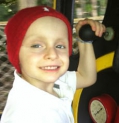cGAS-STING regulation and function in neuroblastoma

Mentor Name: Adam Wolpaw
Neuroblastoma is a devastating childhood cancer that causes a disproportionate share of morbidity and mortality. Recent studies have found that neuroblastoma cells can exist in different lineage states. The mesenchymal state, while a minor subpopulation at diagnosis, is chemoresistant and important in relapsed disease; thus, curing neuroblastoma will require therapies that can target mesenchymal cells. Our lab has demonstrated that mesenchymal neuroblastoma cells express higher levels of several inflammatory sensors. Activation of these sensors in mesenchymal cells can increase their killing by immune cells, demonstrating a unique vulnerability of this therapy-resistant state. One clinically-relevant inflammatory sensing pathway is the cGAS-STING pathway, which activates inflammatory signaling when it binds to cytosolic DNA. Preliminary data suggest that STING is only expressed in the mesenchymal neuroblastoma state, suggesting this pathway may be exploited to target therapy-resistant neuroblastomas. In this project, we will work to gain a detailed understanding of this pathway by measuring the expression of key pathway components--including cGAS, STING, TBK1, and IRF3 and how they differ between neuroblastoma cell lines; treating cells with different pathway agonists, tracking key metrics of response; transfecting DNA or radiate cells to activate cGAS, measuring the production of cGAMP with ELISA; and treating cells with cGAMP and other STING agonists, measuring changes in phosphorylation of TBK1, IRF3, and STAT1.

